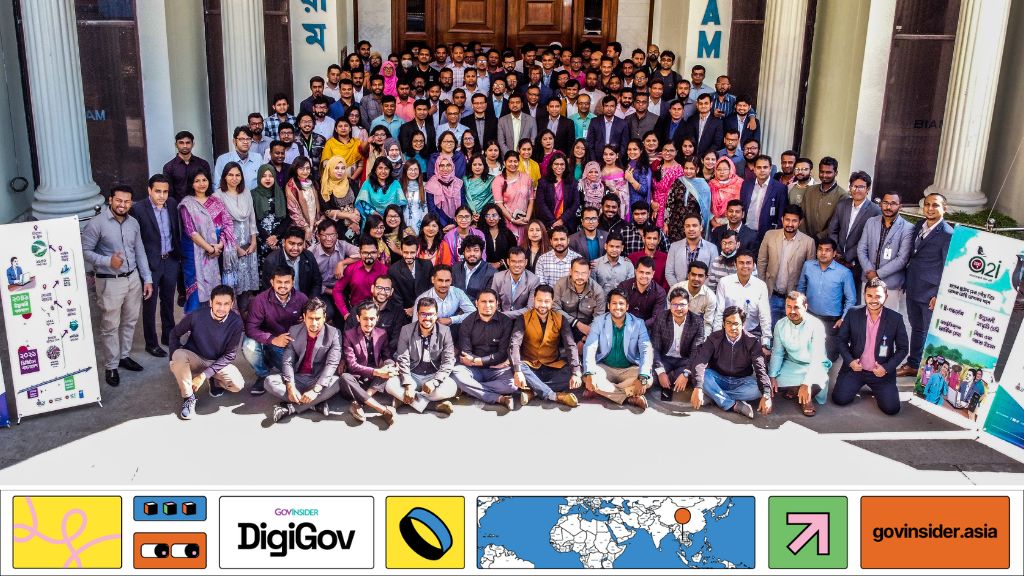12 July, 2023
Making money online
With the rising accessibility of the internet, online platform usage in Bangladesh has been increasing...

After driving public sector innovation for over 15 years, Bangladesh’s a2i programme will soon make the unprecedented jump to become an ICT innovation agency overseeing digital transformation across both public and private sectors. GovInsider speaks to a2i’s leaders to learn more.
Early this year, Sheikh Hasina, the world’s longest-serving female head of government, won her fifth election – running a campaign on Bangladesh’s digitalisation initiatives, which promise to usher in the country’s “Smart Bangladesh” strategy by 2041.
The Digital Bangladesh programme, which ended in 2021, has reshaped the country’s digital landscape. Over 2,000 government services have gone digital, Internet users have grown from 3 per cent to 39 per cent of the population by 2021, and over 9,000 Digital Centres have been set up to support people without digital access. Within the same timeframe, the country’s development journey has progressed by leaps and bounds.
Now, the country is embarking on a Smart Bangladesh plan with Aspire 2 Innovate (a2i) as its flagship initiative. Initially conceived as a five-year programme to drive Digital Bangladesh in 2009, a2i will soon be restructured as a formal ICT innovation agency – Agency 2 Innovate – with the capacity to drive longer-term plans, says Anir Chowdhury, Policy Advisor of a2i to GovInsider.
This unprecedented shift will enable the agency to operate as a semi-autonomous statutory body, overseeing not just the digitalisation of government services, but innovations within the private sector as well.
“While the [original] programme primarily focused on digital transformation, the agency will focus on smart transformations,” says Chowdhury in conversation with GovInsider.
In comparison, the new agency will take a long-term approach to mobilise resources and develop the capacity of the public and private sector to achieve the country’s Vision 2041 goals. As an agency, it now has the capacity to not only develop policies and laws to make digital innovation work for the poor, but also spin off other entities to drive specific goals, he says.
“We have already been formulating about five or six new initiatives under the agency,” he says.

Under Vision 2041, Bangladesh aims to eliminate poverty and achieve high-income status with a per-capita income of over USD12,500. Smart Bangladesh undergirds this plan, with goals to introduce a universal digital identity for citizens, digital skilling at all levels of society, and a completely paperless government – amongst many other ambitious digital goals. The new framework will enable the agency to go beyond digital issues and explore other realms of innovation – such as improving health, finance and pedagogical reform. As the agency’s scope of work expands, it will be able to create new ventures in partnership with the private sector, attract top talent with long-term career paths, and set up international partnerships, he says.
“We actually had to write a new law to create this agency, because the current laws of the land did not support the creation of an agency that has policy-making functions and company functions,” he shares. The new agency will also be able to receive investments, rather than just grants.
What lessons does a2i offer to other developing countries which wish to kickstart innovation units? For Chowdhury, prioritising organisational change comes first – with setting culture within the government right as a critical foundation.
As a programme, a2i digitalised government services, developed citizen-centric technology to improve access, and drove organisational change within government, says Chowdhury. Having inherited many colonial-era structures, the team had to introduce new incentives to drive innovation and citizen-centric thinking.
“We tried to create a sense of collaboration and competition in the government,” he says. These include introducing Bangladesh’s Public Administration Awards to recognise innovative public sector projects.
The agency has also introduced empathy training courses that arrange for senior officials to visit citizens’ access points as mystery shoppers, better understand the challenges citizens face, and improve their delivery of services, adds Ishtiaque Hussain, Regional Representative for Africa at a2i.
Chowdhury shares that the empathy training programme has trained over 35,000 civil servants.
The team has also introduced a service process simplification programme, designed to help civil servants eliminate redundant steps in service delivery.“Previously it used to take about 39 steps to get an electricity connection. Now it takes about seven steps and hopefully in the future it may take two steps, maybe zero,” he says.
When it comes to digital transformation, citizen-centricity is absolutely key. As of December 2022, a2i has collectively saved citizens 19 billion workdays, USD 22 billion, and eliminated 13 billion visits to government offices.
“If I have to summarise what other innovation agencies can learn from a2i, it’s to really brutally focus on what citizens need and not focus so much on the administrative divisions and the silos of the government,” he says.
Consider the perspective of farmers who previously had to consult various agencies and ministries just to transfer a plot of land. How can the government support them better?
This is the story behind e-mutation, a Ministry of Land initiative that sought to bring all land-related services within one digital system in 2019 through a digital public infrastructure approach. Today, the system has reduced time taken from 60 to 28 days with only one visit, serves over 1.5 million people, and won a United Nations Public Service Award in 2020.
Other citizen-centric initiatives developed by a2i include Muktopaath, a national e-learning platform that helps young people upskill; myGov, an e-services app; and an e-commerce aggregator platform, ekShop which has been inducted into the Digital Public Goods Alliance’s Registry.
a2i is also working with other developing countries, including the Philippines, Fiji, and Somalia, to implement similar projects.

12 July, 2023
With the rising accessibility of the internet, online platform usage in Bangladesh has been increasing...

27 June, 2024
One of the key advantages of the ekPay is- it gets rid of the need...

27 March, 2023
a2i catalyses experimentation and public-private partnerships applying a gender lens to unlock new services and...